Spanish style front doors blend warmth, artistry, and robust craftsmanship to create an inviting and character-rich entrance. Drawing on Mediterranean and colonial influences, these designs feature elements like arched forms, richly hued paints, decorative tiles, and wrought-iron accents. Whether you prefer a rustic, timeworn patina or a vibrant modern twist, there’s a Spanish-inspired door idea to elevate your home’s curb appeal. Below are 20 detailed concepts, each showcasing distinct materials, colors, and embellishments that capture the essence of Spanish architecture and design.
1. Classic Arched Wooden Door with Wrought Iron Grille

A hallmark of Spanish design is the rounded or horseshoe arch framing a solid wood door. Crafted from heavy hardwoods such as mahogany or knotty alder, the door often features an integral wrought-iron grille over a narrow glazed opening. This grille can be ornate, with scrolls or fleur-de-lis motifs, offering both security and a glimpse inside. The deep wood tones complement stucco walls and red clay roof tiles, while the arch softens the facade with graceful curves. This style reflects traditional Andalusian entryways found throughout southern Spain.
2. Vibrant Painted Doors in Bold Terracotta or Turquoise
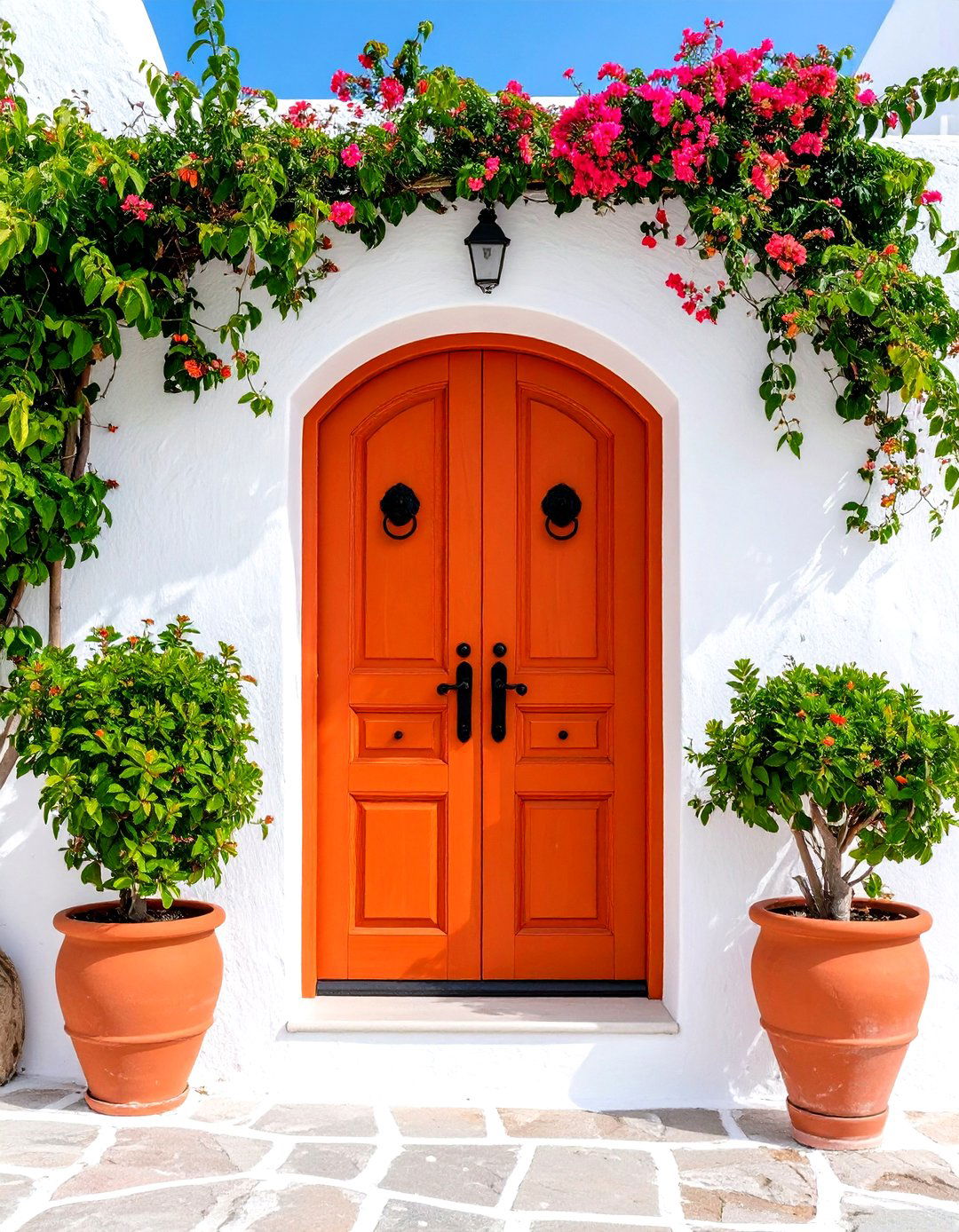
Painting your front door in a bold hue instantly adds personality and echoes the vibrant colors of Mediterranean villages. Terracotta, turquoise, or deep cobalt blue are popular choices, balancing warm and cool tones against white or earth-toned stucco. High-quality exterior paint ensures durability in sun-soaked climates. Pairing these vivid colors with simple black or bronze hardware lets the paint stand out without overwhelming. This approach draws inspiration from coastal Spanish towns like Cadaqués, where colorful doors contrast the neutral surroundings.
3. Hand-Painted Tile Surrounds
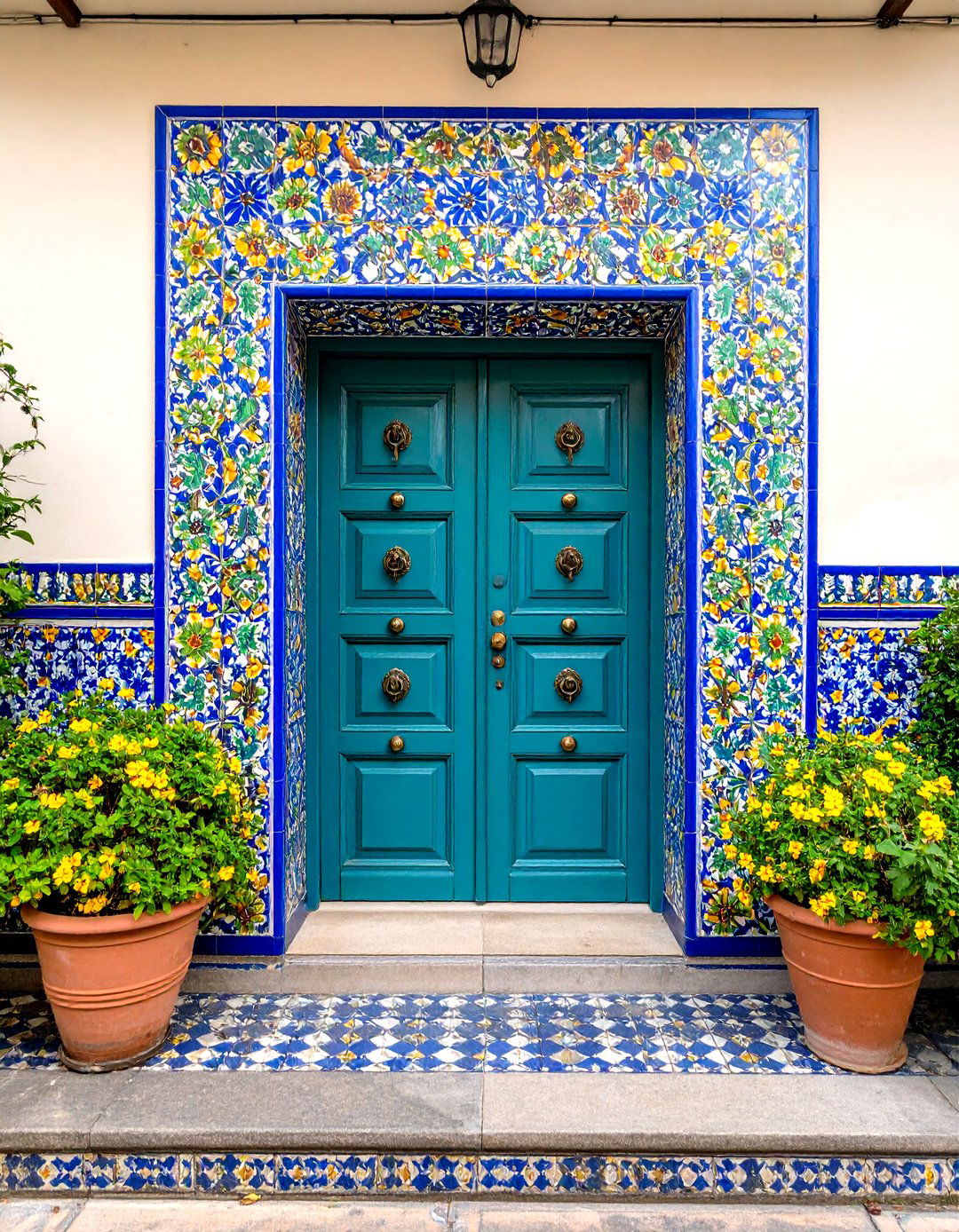
Incorporate handcrafted ceramic tiles around your door frame or as a kickplate at the door’s base. Traditional Talavera tiles, featuring intricate blues, greens, and yellows, create a focal point and celebrate Spanish ceramic artistry. A patterned tile border can form an arch or rectangle, echoing Moorish geometric designs. Tiles are weather-resistant and easy to clean, making them both decorative and practical. This technique is reminiscent of Spanish Colonial revival homes in California, where tilework complements courtyards and fountains.
4. Double-Door Entrances with Carved Wood Panels

For wider entries, paired wooden doors allow for grand proportions while preserving Spanish charm. Each half may be carved with panels displaying stylized floral or geometric patterns. The central meeting stile can feature a decorative vertical iron finger pull. When both doors open, they reveal a spacious foyer or courtyard beyond, perfect for indoor-outdoor living. This dual arrangement was common in haciendas, enabling large gatherings and facilitating airflow during hot summers.
5. Peep-Hole “Speakeasy” Doors
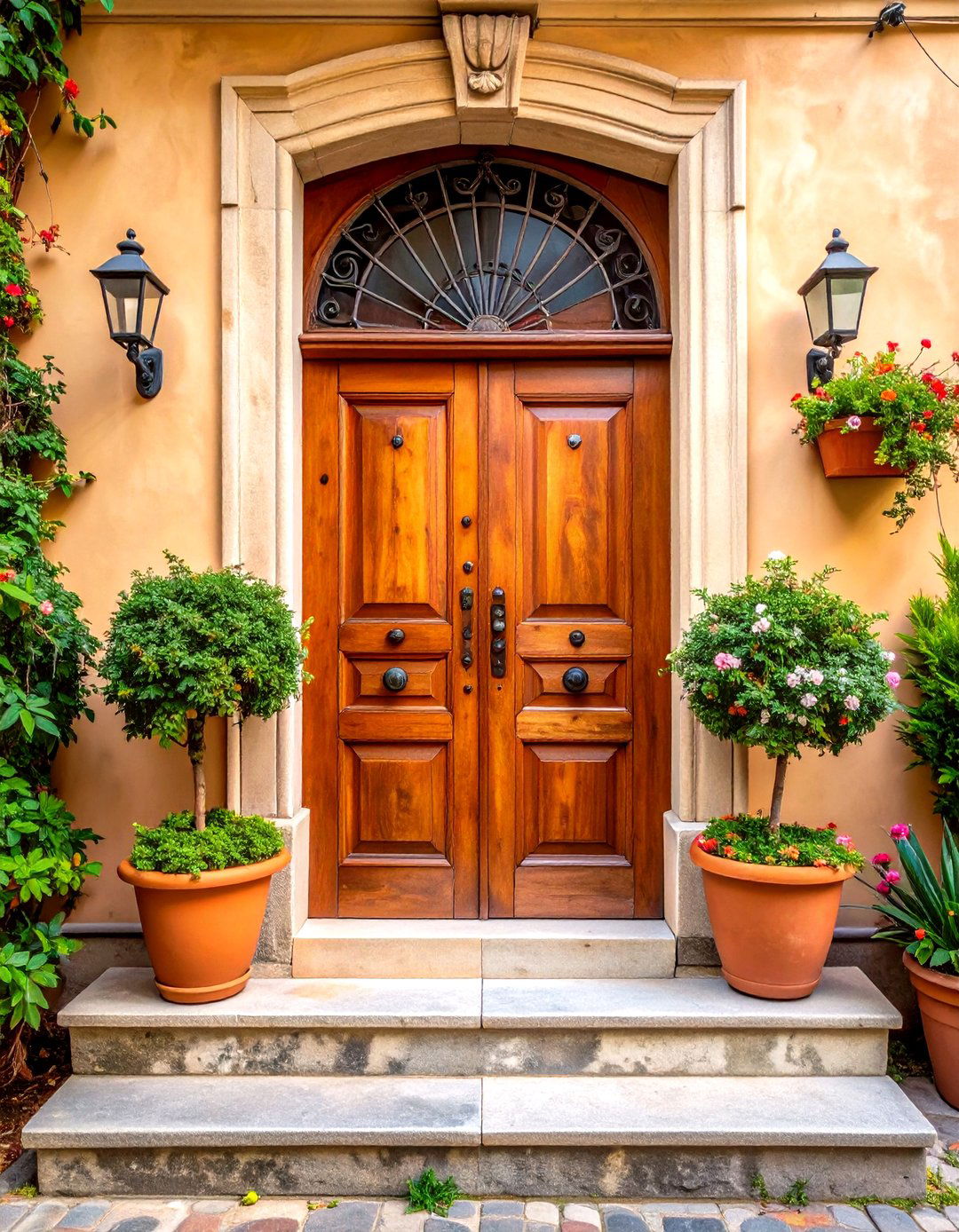
A speakeasy or “spy” door includes a small, hinged panel—often set within a larger iron grille—that swings open to allow a discreet view outside. This whimsical feature adds historical flair, recalling Old World manor doors. Constructed of thick wood and robust iron, it serves as both a conversation piece and a security measure. The speakeasy door has seen renewed popularity through specialty makers like Rustica Hardware, who blend nostalgia with modern standards.
6. Sidelights with Stained-Glass Inserts
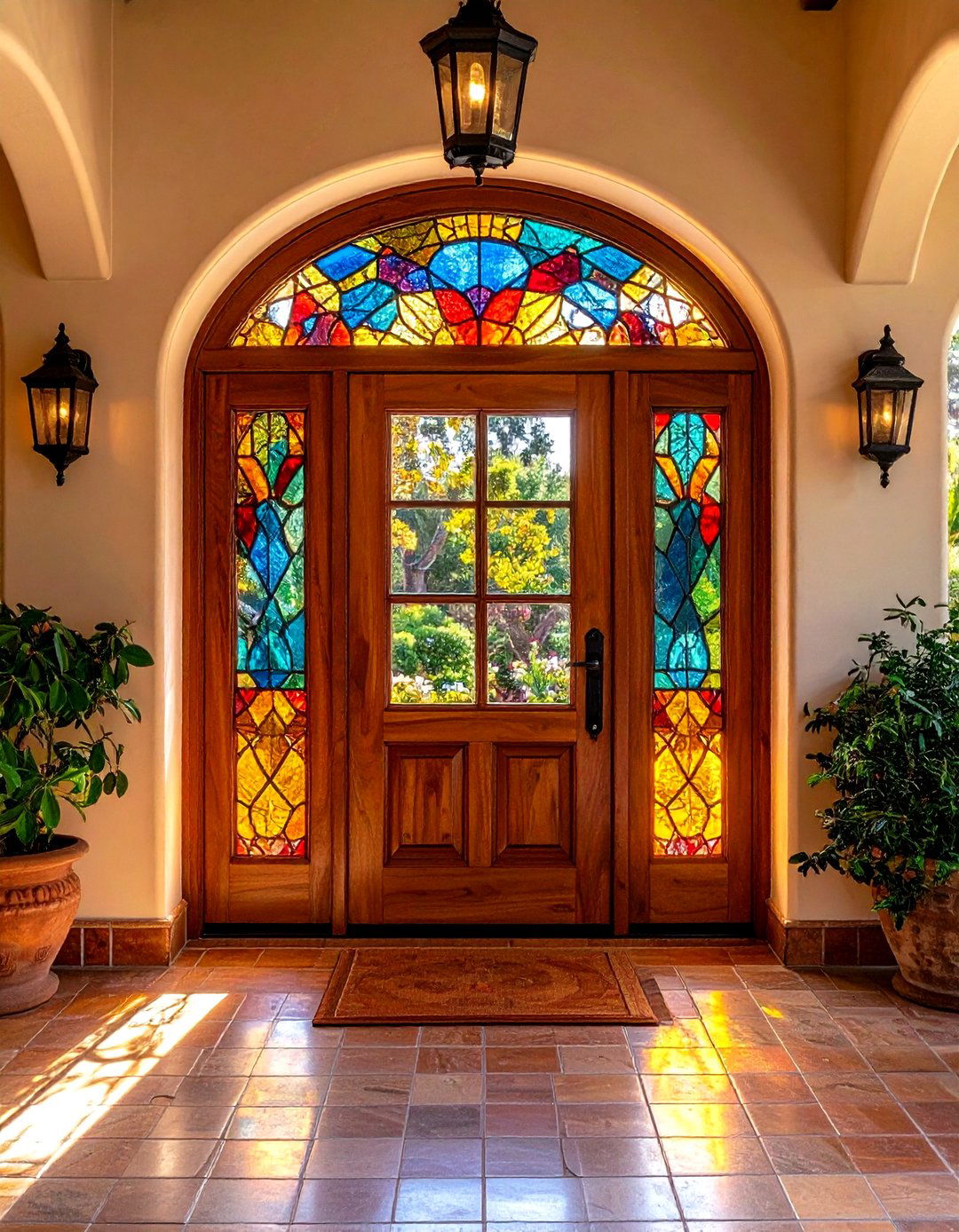
Flanking the main door with narrow sidelights filled with stained or leaded glass introduces color and light play. Floral motifs or simple diamond patterns suit Spanish aesthetics while providing privacy. The stained glass can feature warm amber, ruby, and teal hues to echo terracotta and stucco. This detail enhances interior illumination with a kaleidoscope effect. Many custom door shops offer glazed sidelights to perfectly match door profiles and ironwork.
7. Rustic Knotty Alder Doors

Knotty alder offers rich grain variations and a rustic character ideal for Spanish-inspired entries. Doors can be left unfinished for a weathered look or stained in amber tones to highlight the knots and swirls. Horizontal grooves or plank-style construction accentuate the natural texture. Alder’s softer hardness also accepts intricate carving or routed designs. When paired with simple black strap hinges and ring pulls, it evokes the understated elegance of rural Spanish cottages.
8. Recessed Entry with Heavy Wooden Beam
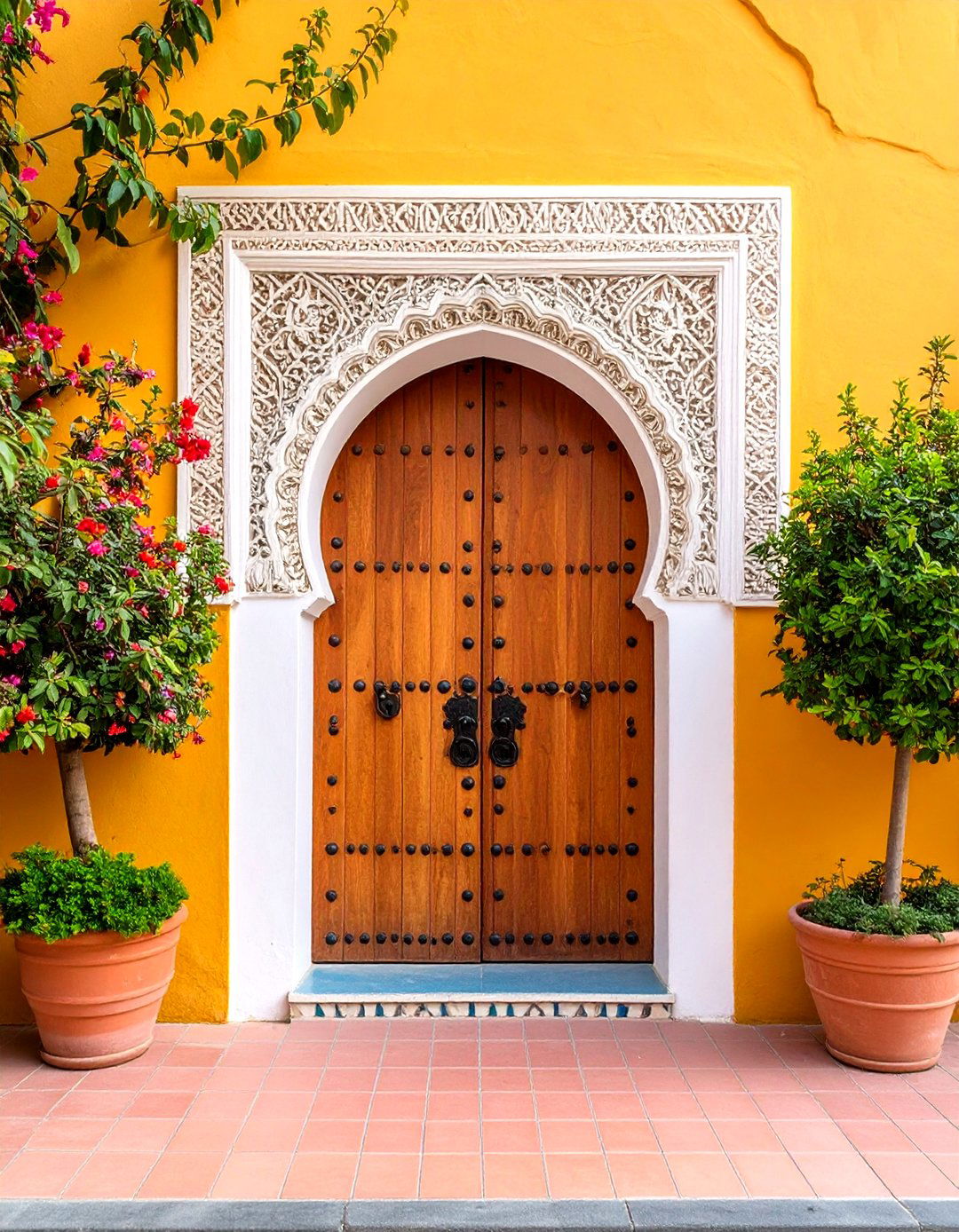
Rather than flush installation, setting the door back within a deep stucco-lined alcove creates shade and depth. A thick wooden header beam above the door adds structural emphasis and a tactile contrast. This beam can be left rough-hewn or carved with decorative details. The recessed space also allows for wall sconces with hammered metal shades on either side, illuminating the door at night and reinforcing the welcoming ambiance of a Spanish courtyard.
9. Moorish-Inspired Horseshoe Arch Doors
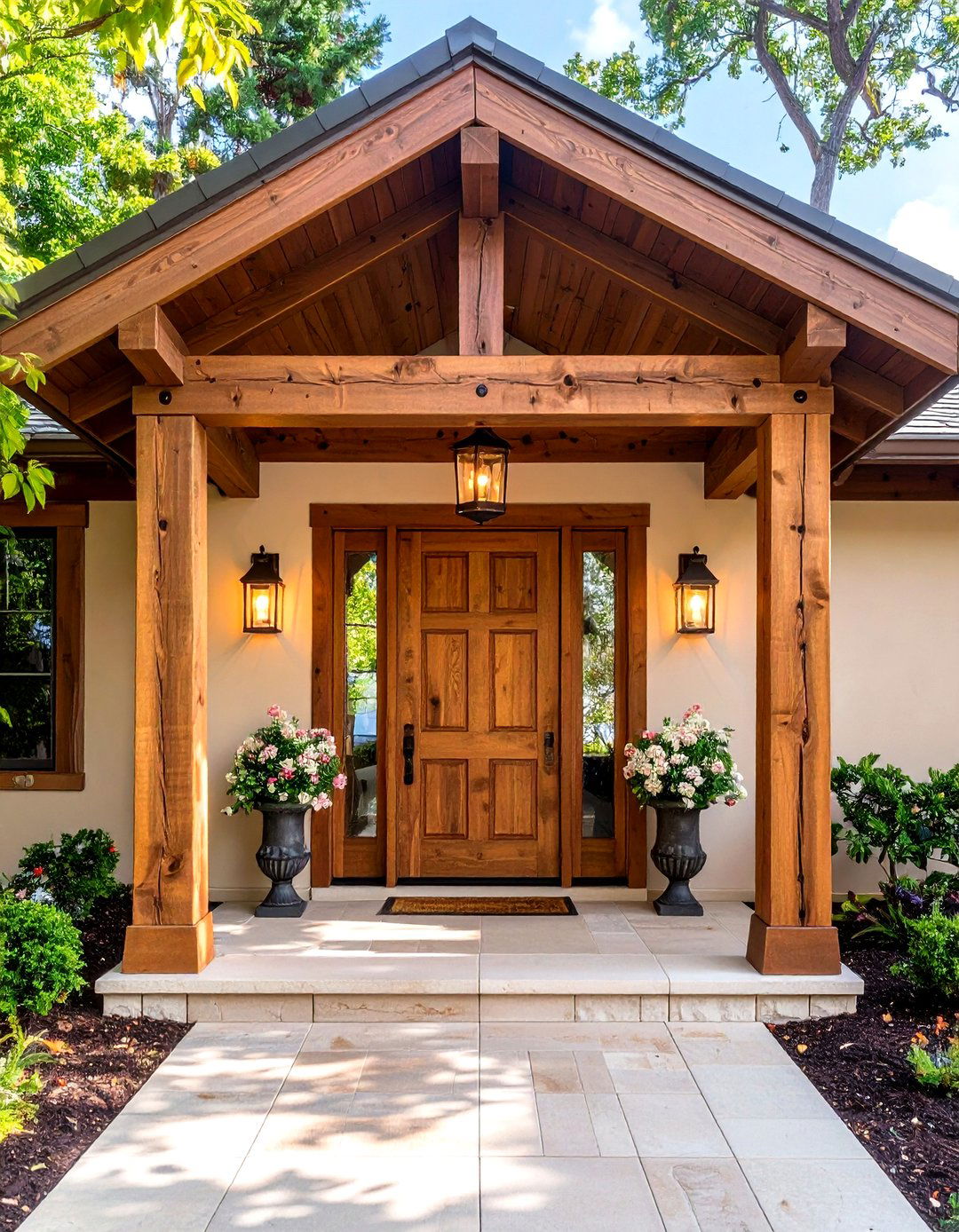
Taking cues from Islamic architecture in southern Spain, a horseshoe arch door features a more pronounced curvature that narrows slightly before flaring out. Often clad in ornamental plaster or patterned tile, it frames a simple wooden door or double doors. The arch may include a keystone adorned with arabesque carvings. This style evokes the Alhambra palace in Granada and adds an exotic, historical touch to contemporary homes.
10. Rustic Metal-Studded Doors
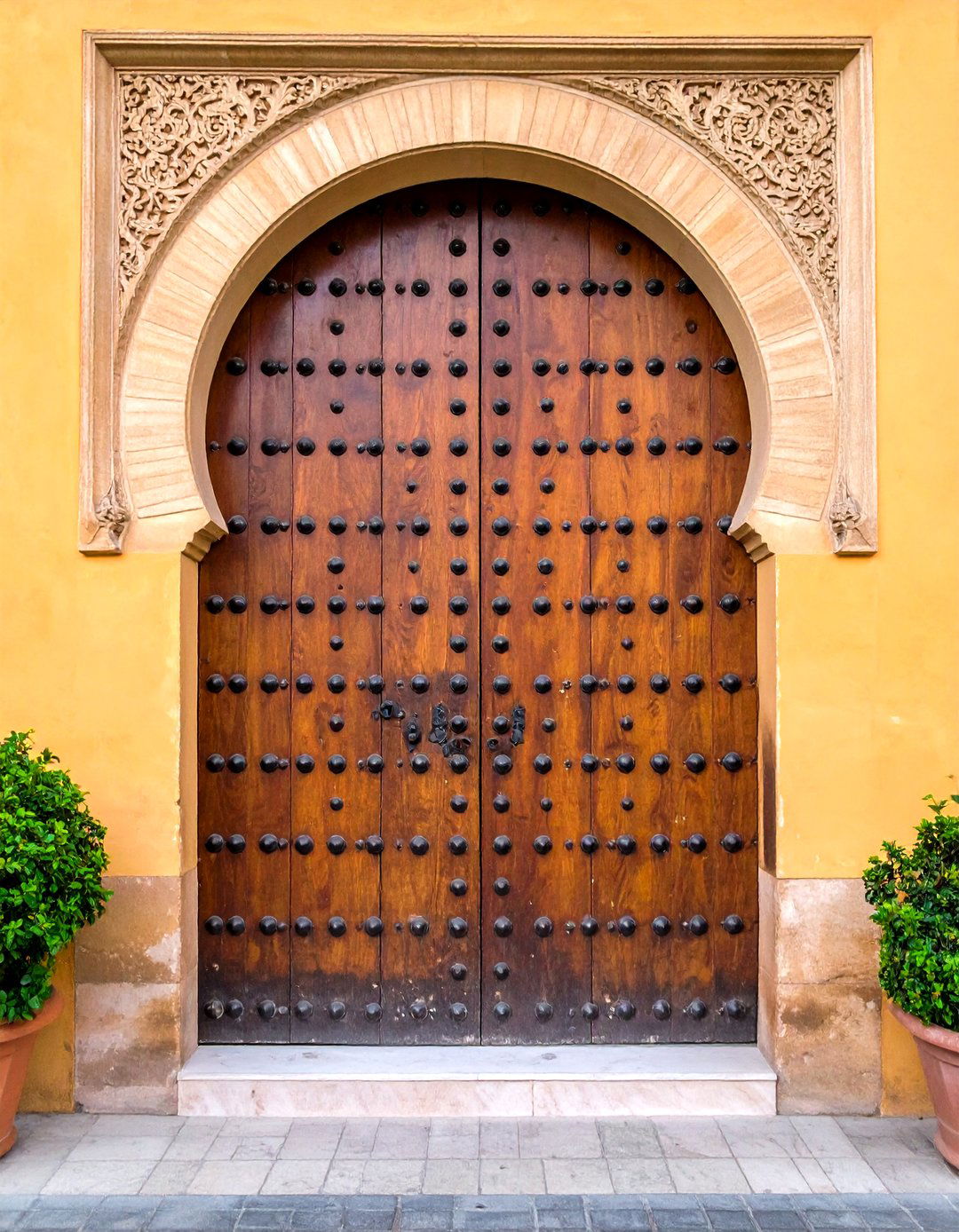
Iron or bronze studs arranged in symmetrical rows provide both reinforcement and decoration. Studding wooden doors was a medieval practice, adapted in Spanish colonial times. Modern replicas use hand-forged nails with hammered heads, set against stained or painted wood. Stud patterns can form crosses, diamonds, or simple grids. When paired with metal strap hinges and a hefty ring knocker, the result is a sturdy, fortress-like door that remains inviting through its handcrafted details.
11. Custom Hand-Forged Iron Knockers
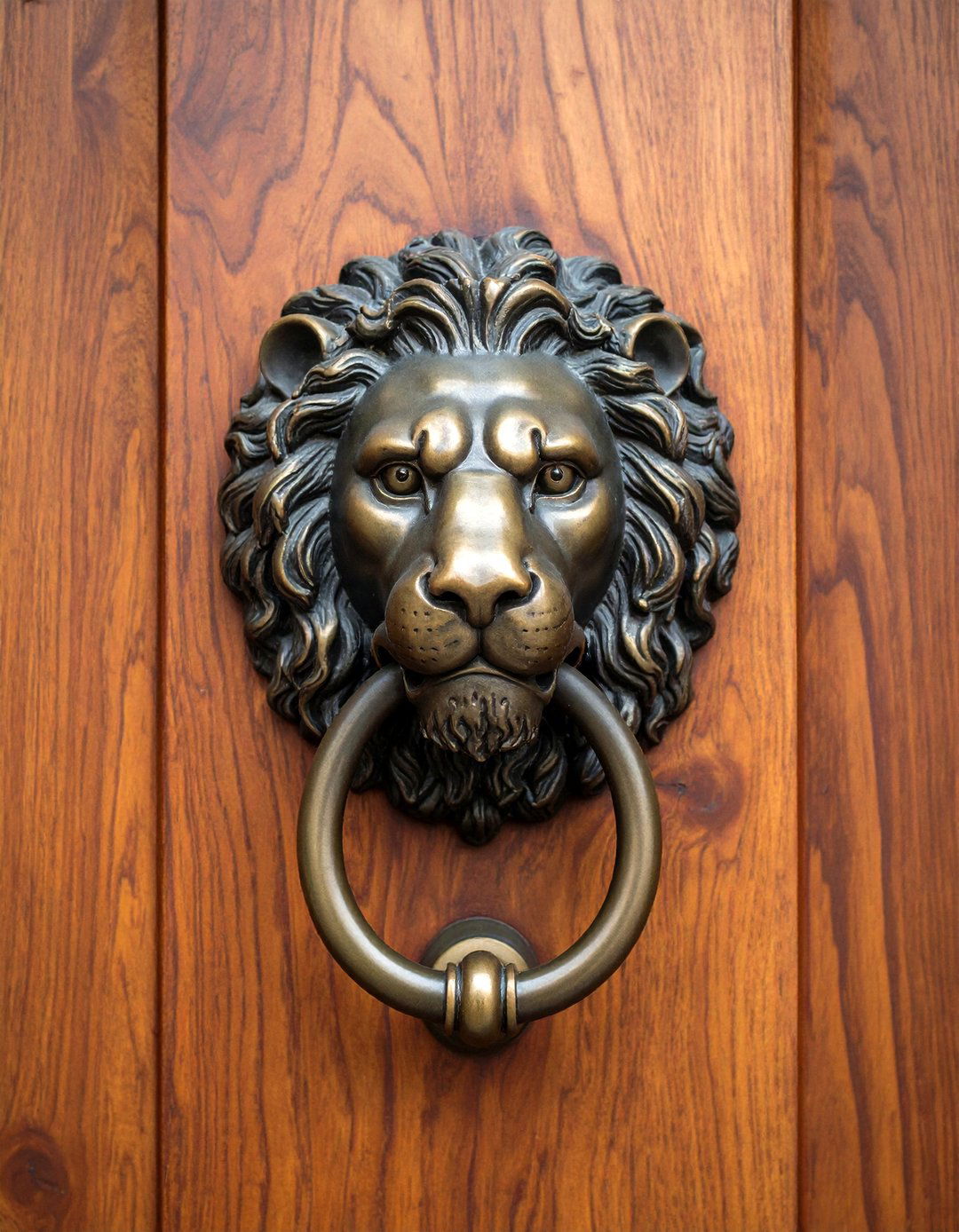
A door knocker is more than a welcome signal—it can be a piece of art. Spanish designs often feature lion heads, scrolls, or sunburst shapes, all crafted in wrought iron. The dark metal patinates over time, enriching the historic look. A striking knocker draws the eye to the door’s center, especially on plain wood or painted surfaces. Many artisan blacksmiths specialize in one-off designs, allowing personalized initials or dates to be integrated.
12. Door with Decorative Hardware and Hinges

Beyond knockers, strap hinges and escutcheons can transform a simple door into a focal point. Wide, T-shaped hinges in wrought iron or oil-rubbed bronze create strong diagonal lines. Decorative keyhole covers (escutcheons) add an extra flourish, often matching hinge styles. Choosing hardware with curled ends or embossed patterns reinforces the Spanish motif. This attention to detail harmonizes with other iron elements like lanterns or window grilles.
13. Brightly Colored Accent Doors

For a contemporary twist, select unexpected colors—mustard yellow, coral pink, or mint green—and pair with neutral exteriors. This playful take on tradition keeps doors the hero of the facade. Gloss or satin finishes highlight the vibrant shade, while minimal hardware ensures the color remains the primary feature. Accent doors work particularly well on homes with adobe or whitewashed walls, providing a focal splash without overwhelming the overall design.
14. Doors with Oversized Lanterns and Lighting
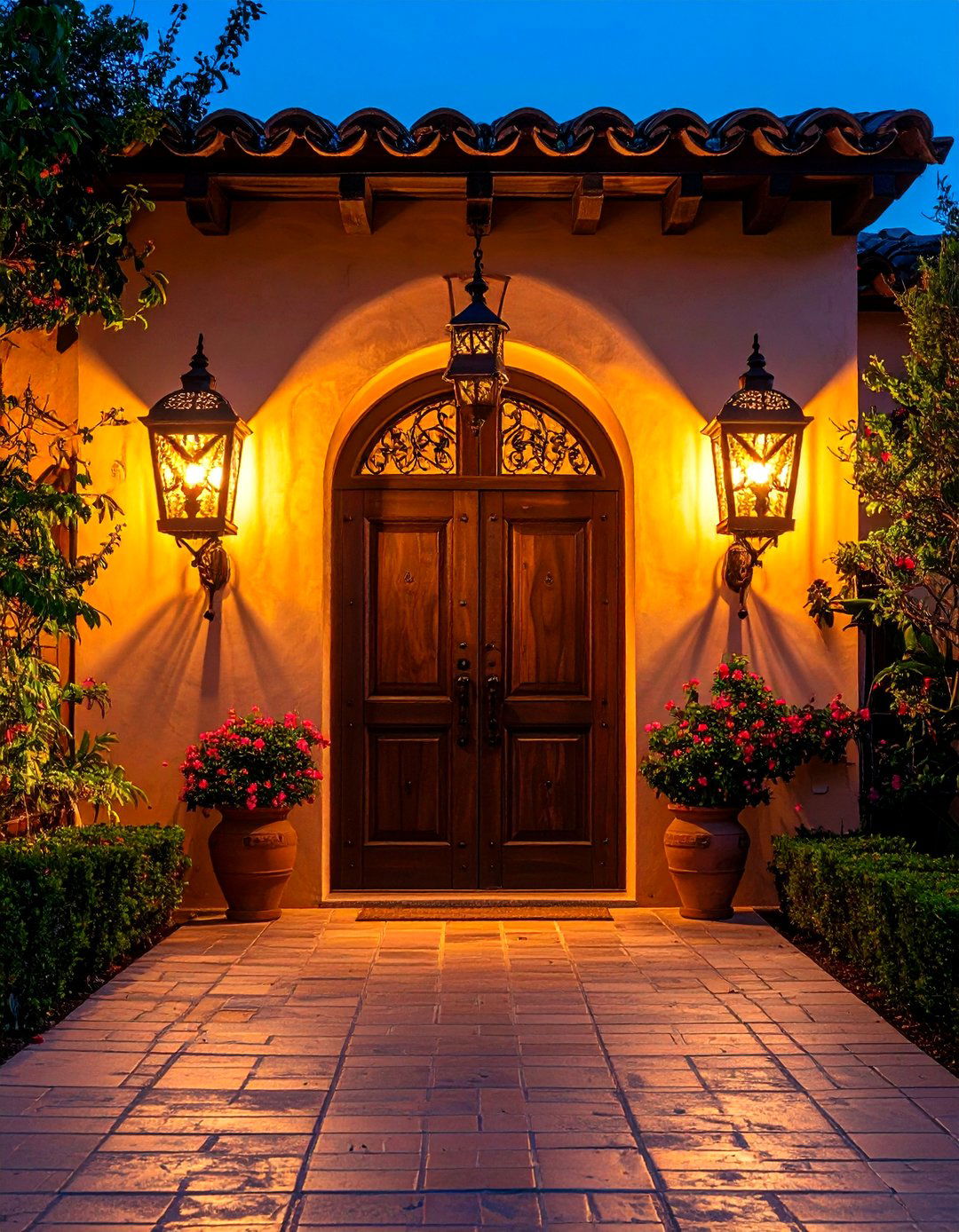
Spanish doorways often feature wrought-iron lanterns suspended overhead or fixed to the sides. Large glass panels protect flickering bulbs or LEDs, casting warm pools of light. Positioning lanterns symmetrically enhances the entry’s formality. For an extra touch, install rope or twisted metal chains to hang the lantern, reinforcing rustic authenticity. Lighting not only highlights the door at night but also accentuates texture and color during day and evening hours.
15. Heavy Timber Dutch Doors
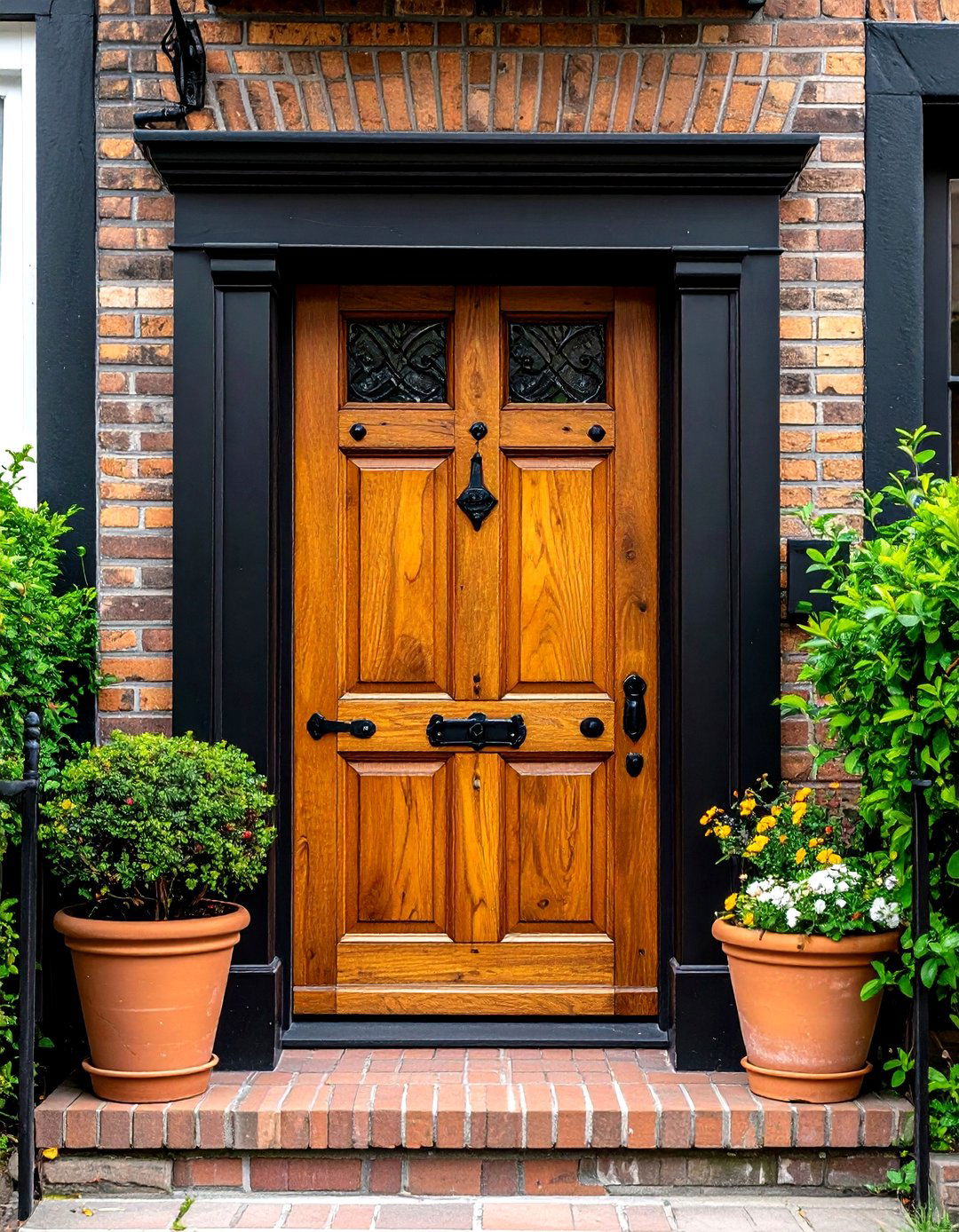
Dividing the door horizontally into two independently opening halves adds functionality and charm. The classic Dutch door allows the top to open for ventilation while keeping the bottom closed—ideal for warm climates. Constructed from thick planks and reinforced with iron strap hinges, this style recalls rural Spanish farmhouses. Paint or stain both halves the same color, or paint the top and bottom in complementary hues for a fresh feel.
16. Doors Framed by Bougainvillea and Climbing Vines
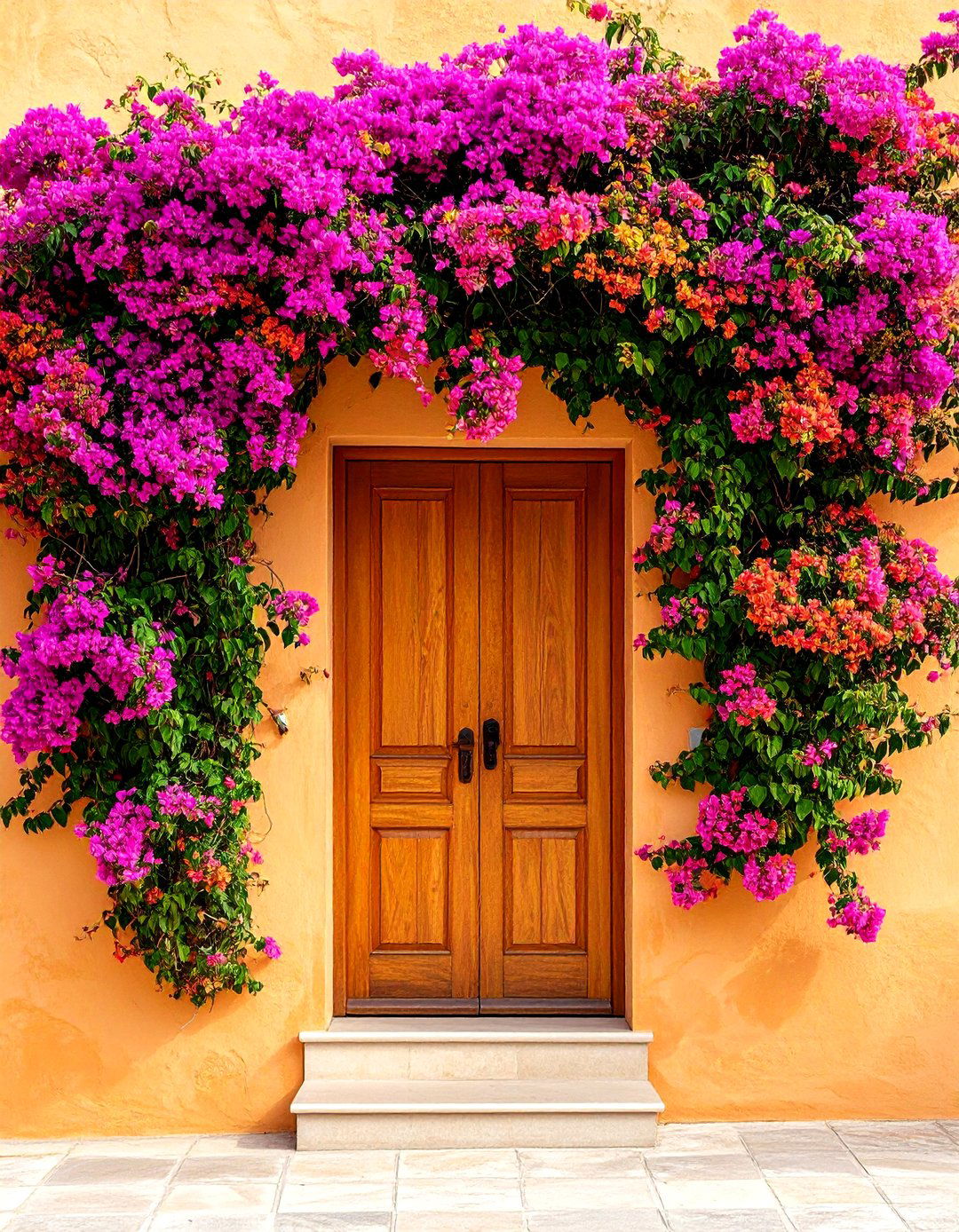
While not part of the door itself, planting bougainvillea, jasmine, or wisteria around the entrance infuses color and fragrance. Vines climbing a nearby trellis or courtyard wall soften hard lines and create a romantic setting. The interplay of vibrant blooms against stucco and wood enhances the Spanish aesthetic. Regular pruning guides the vines to arch over the door, forming a natural canopy that changes with the seasons.
17. Doors with Castillo-Style Lion Head Knockers

Lion head knockers, sometimes called “castillo” knockers, are a timeless Spanish door embellishment. Typically crafted in brass or iron, the lion grips a ring in its mouth. Polished brass offers a bright focal point, while aged iron presents a subdued, historic vibe. The symbolism of strength and protection makes this knocker both decorative and meaningful. Mounted at eye level, it invites interaction and instantly conveys Old World character.
18. Tile Mosaic Inlays in Door Panels
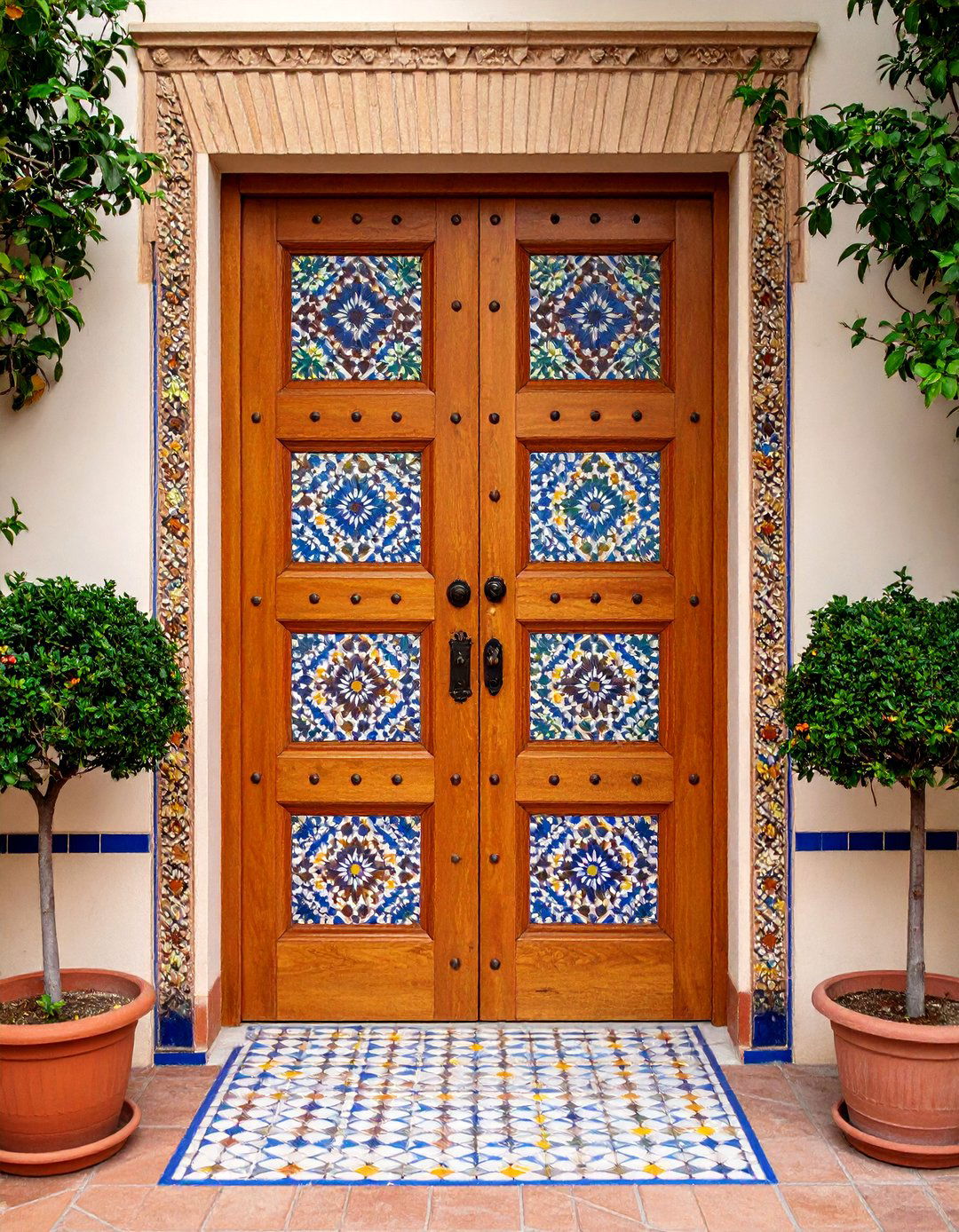
Incorporating small mosaic tile inserts directly into recessed door panels offers a unique statement. Geometric patterns, floral motifs, or simple borders can be set flush with wood. Use glazed tiles that resist fading and water damage. The contrast of smooth, colorful tiles against textured wood provides visual interest. This detail works especially well on double doors, with mirrored or complementary mosaics on each leaf.
19. Patinaed Copper Canopies over Doors
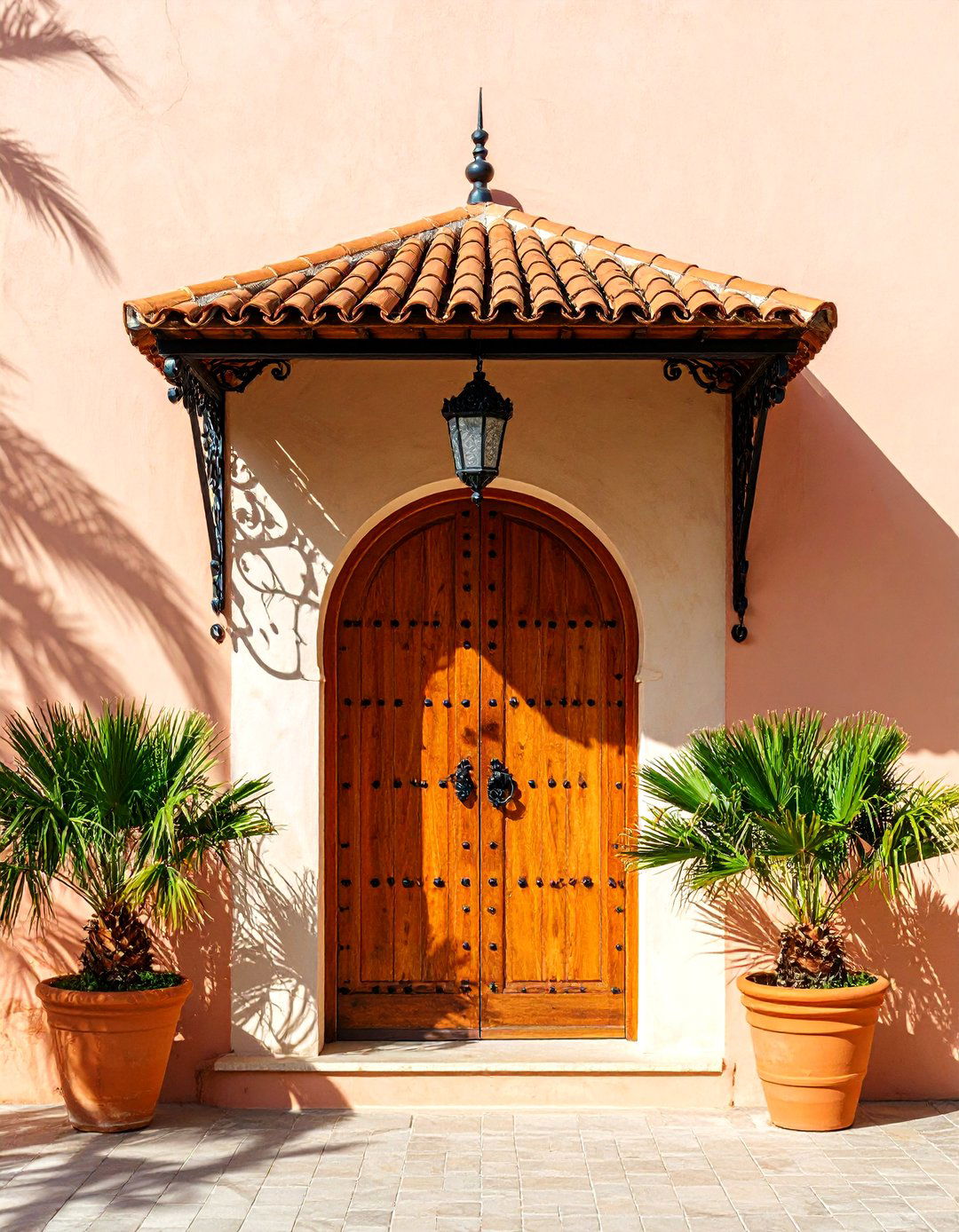
Adding a small copper awning above the door protects it from rain while introducing material contrast. Over time, copper develops a blue-green patina that harmonizes with terracotta and stucco. Simple brackets in iron support the canopy, echoing other metal accents. This practical feature also casts patterned shadows when sunlight filters through decorative cutouts along the awning’s edge.
20. Doors with Flanking Potted Olive Trees
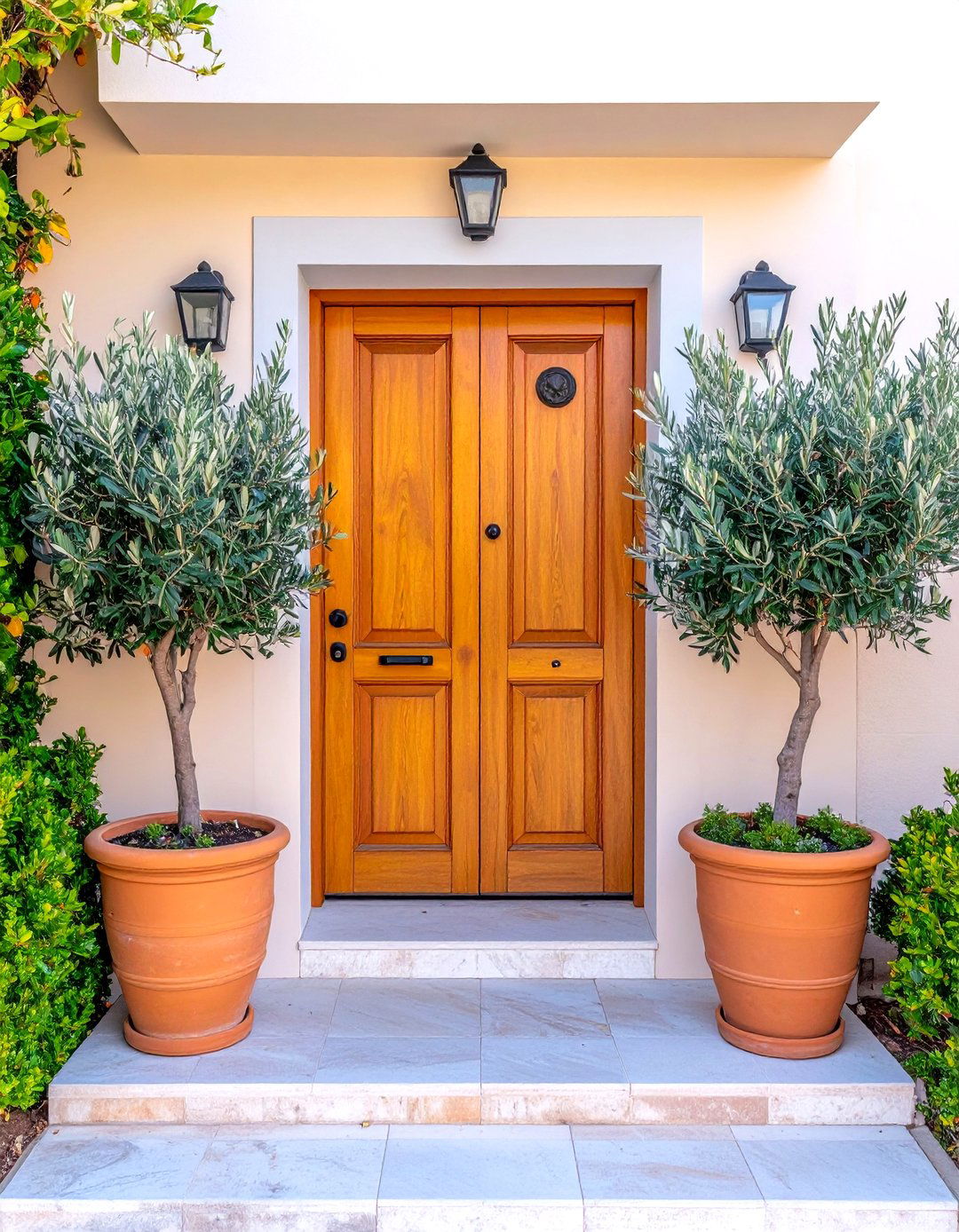
Framing the entrance with symmetrical containers of olive or citrus trees adds a Mediterranean touch. Terracotta pots resonate with Spanish design, and the silver foliage of olives complements warm wood and stucco. During spring, citrus trees may bloom, filling the air with scent. The greenery softens the hardscape and directs attention toward the door, completing the Spanish-style vignette.
Conclusion:
Spanish style front doors marry robust materials, artisanal details, and vibrant accents to create striking entrances that feel both timeless and welcoming. From classic arched wood and iron-grilled designs to colorful painted finishes, tile embellishments, and lush plantings, each idea celebrates the region’s architectural heritage. Whether you favor rustic authenticity or a modern twist on tradition, these concepts can be tailored to your home’s scale and style, ensuring a memorable first impression that honors Spanish design’s warmth and character.


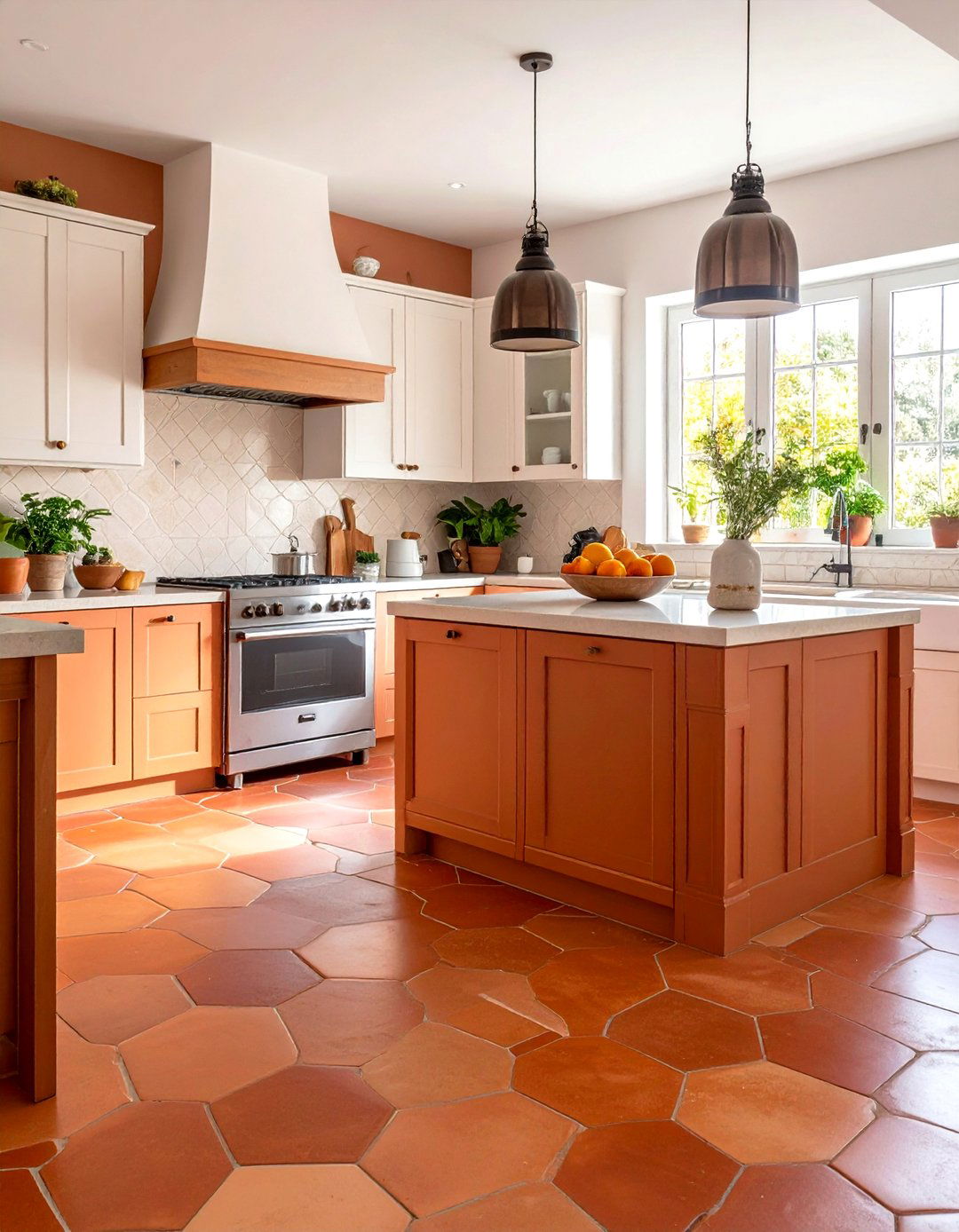
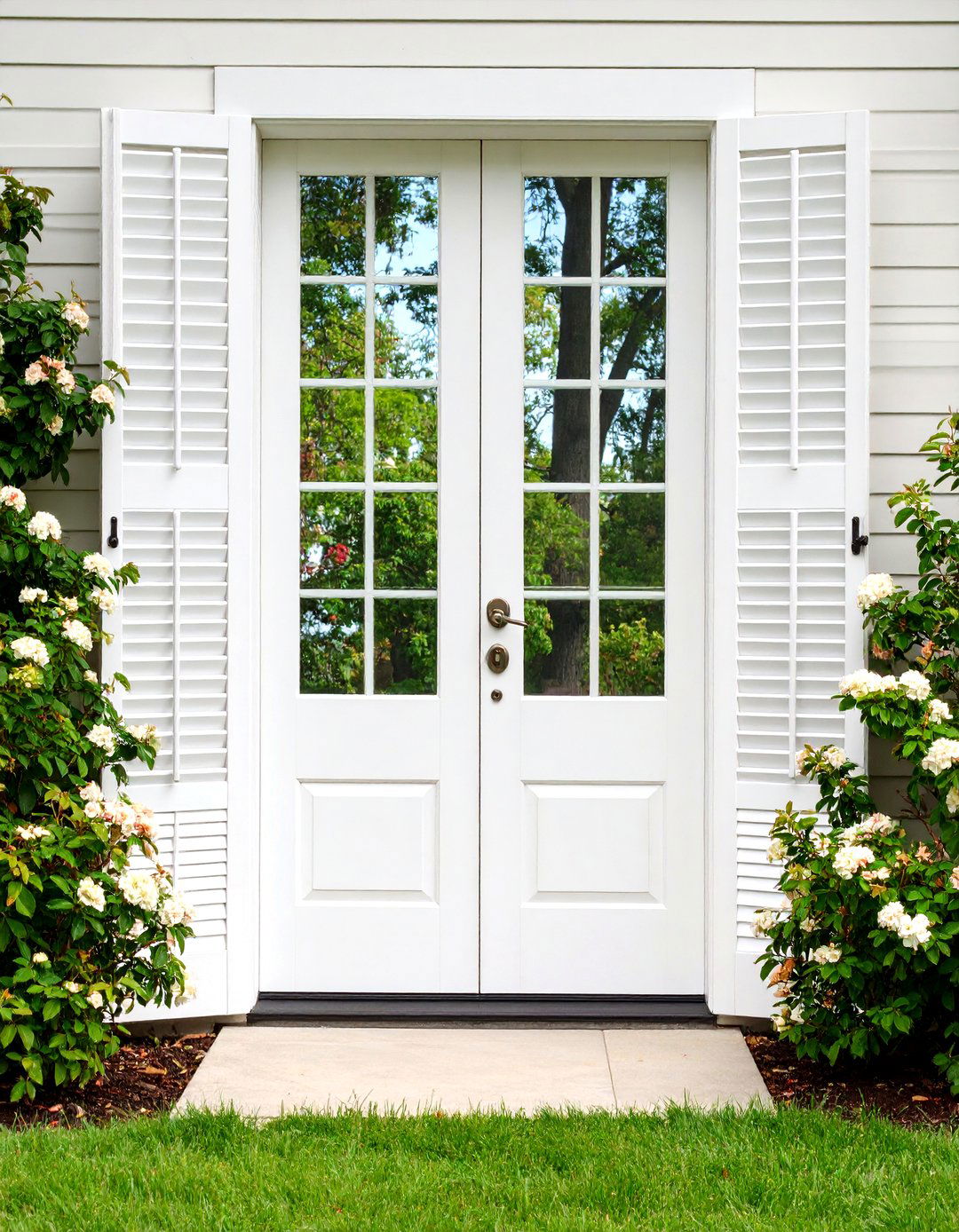
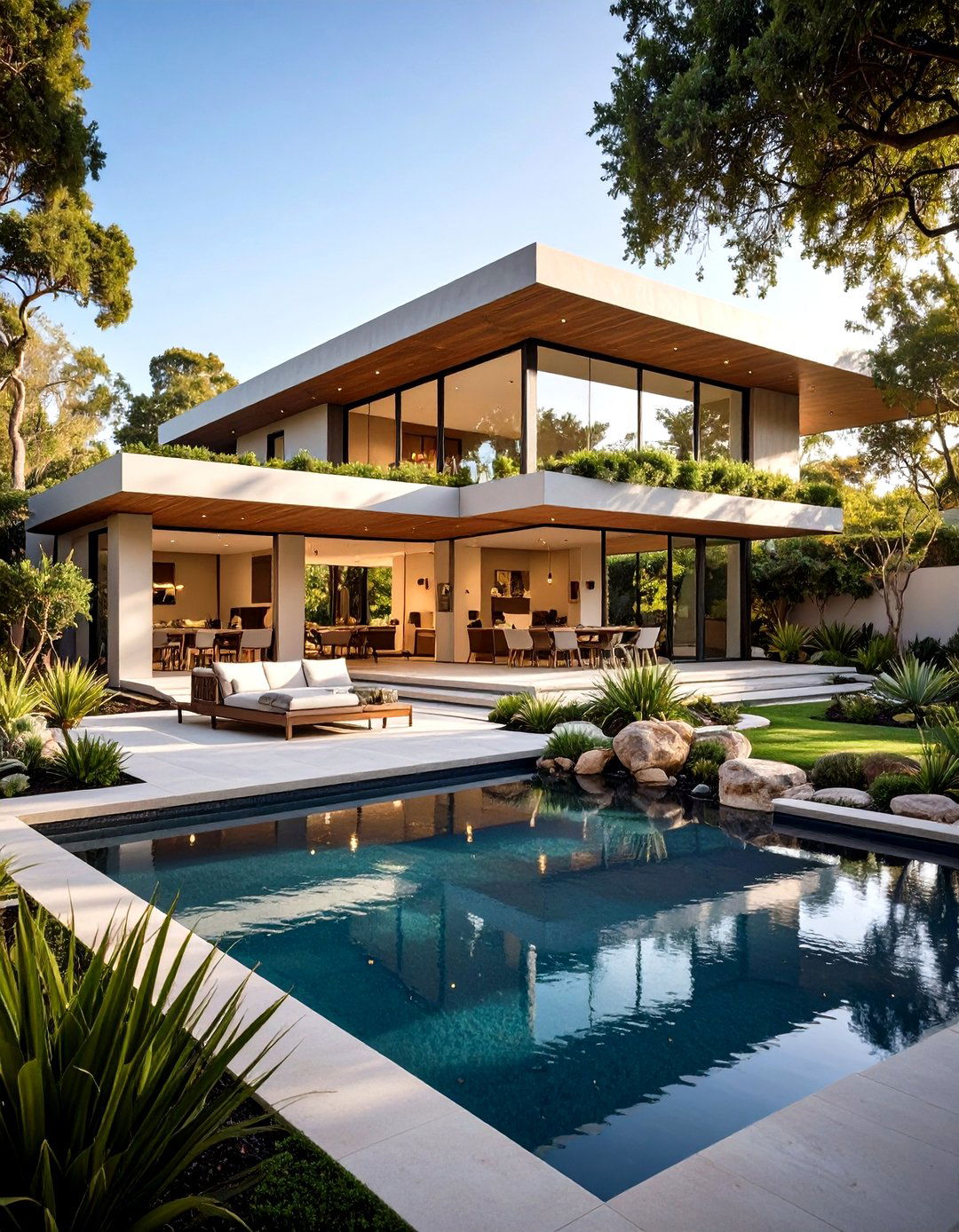

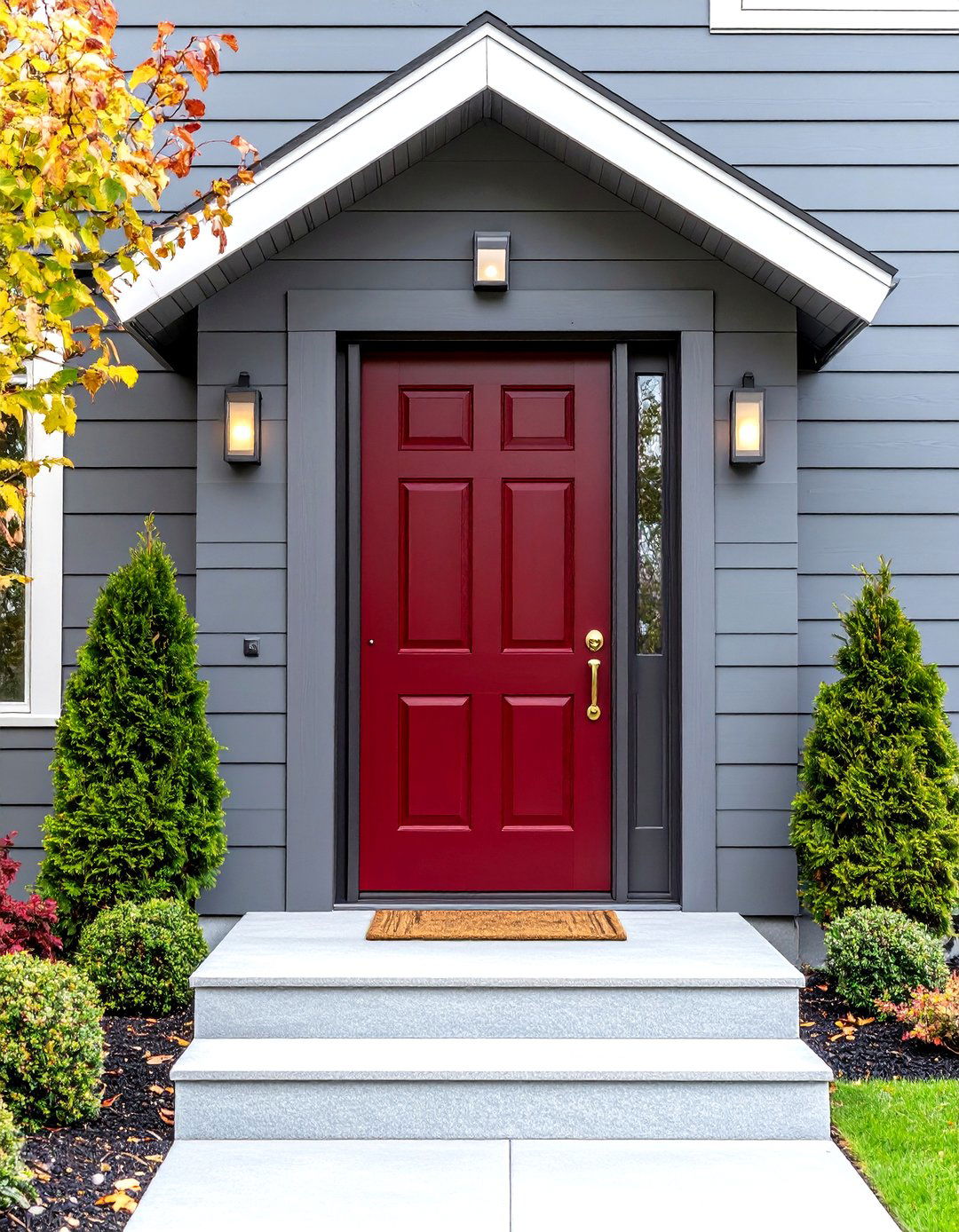
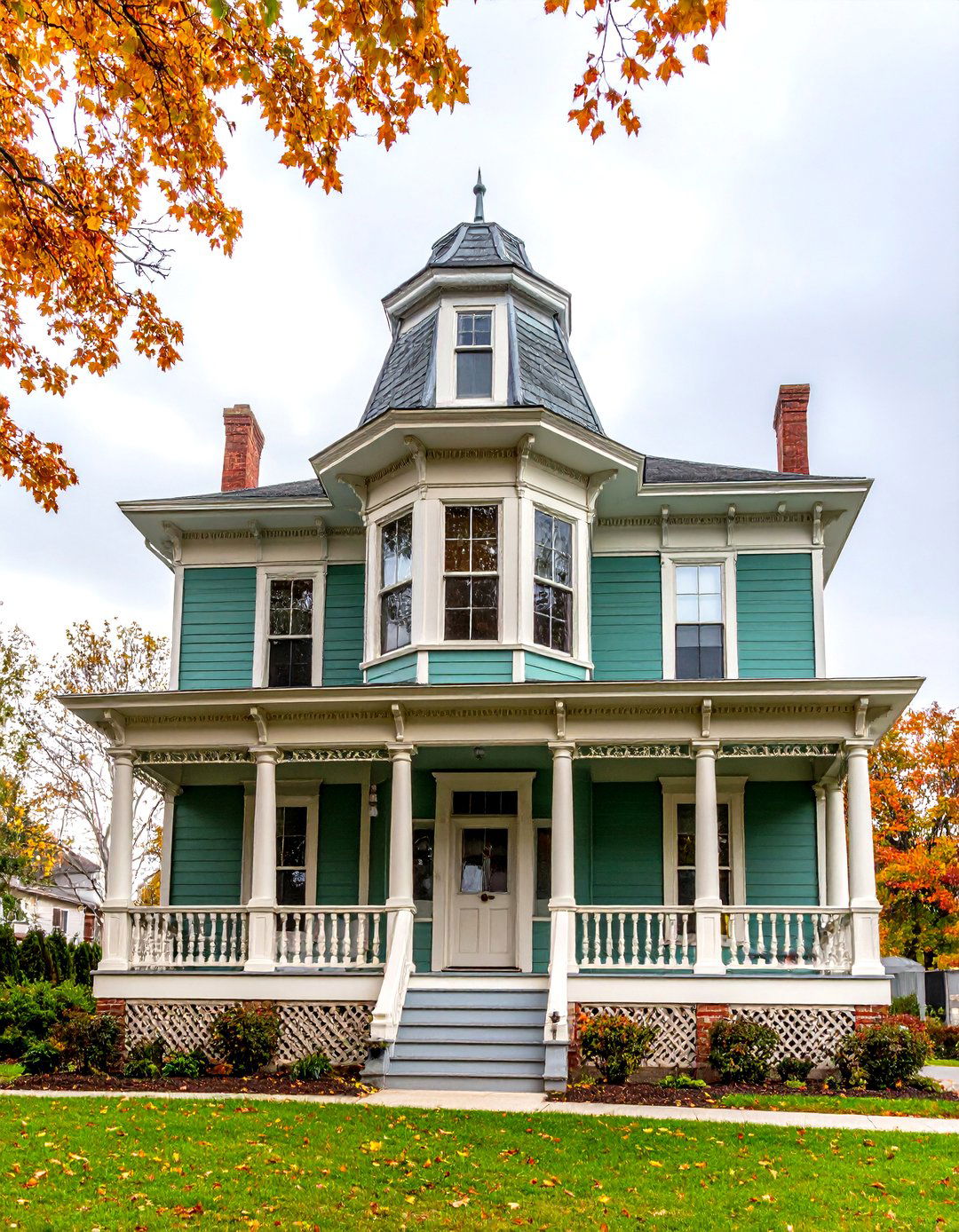
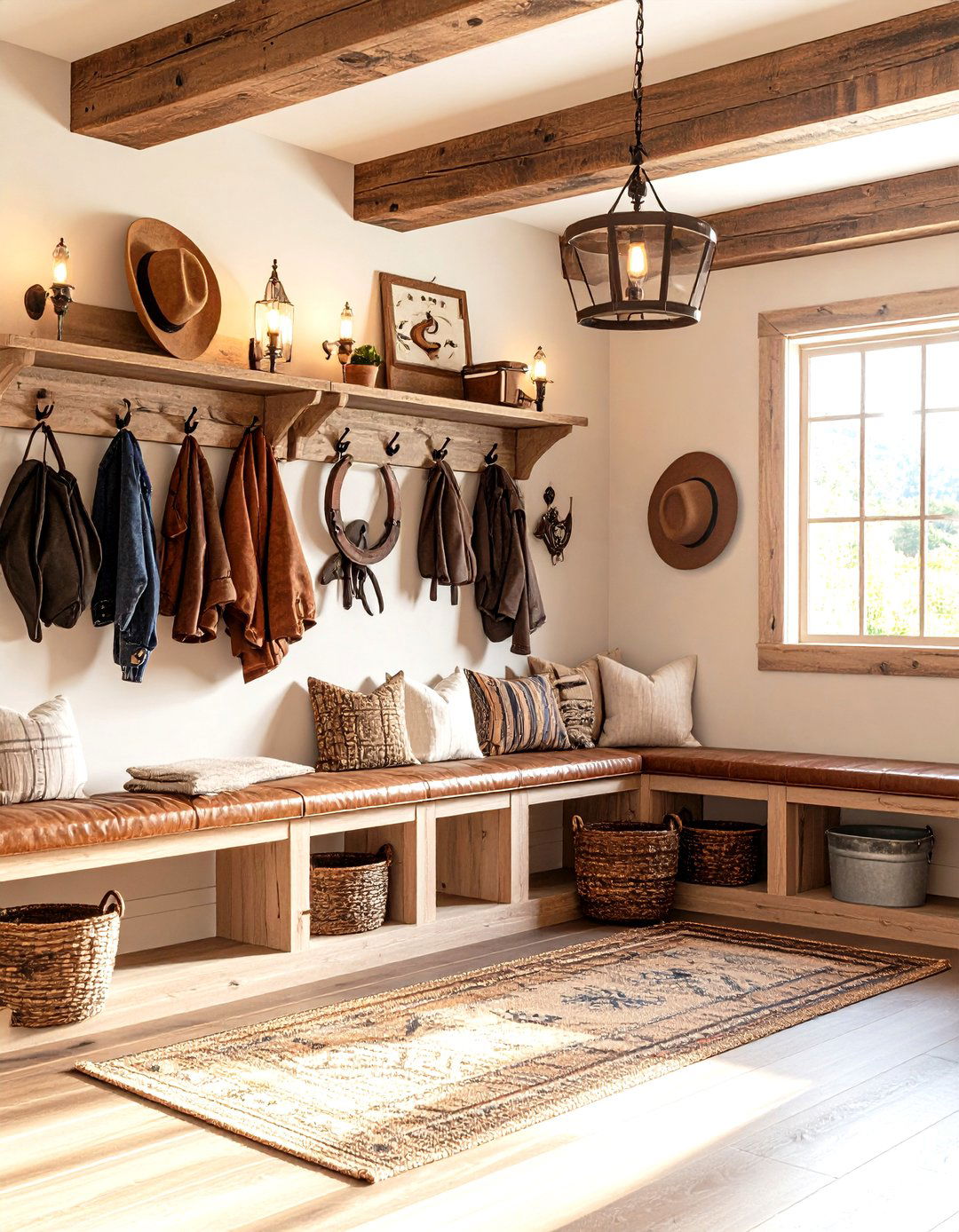

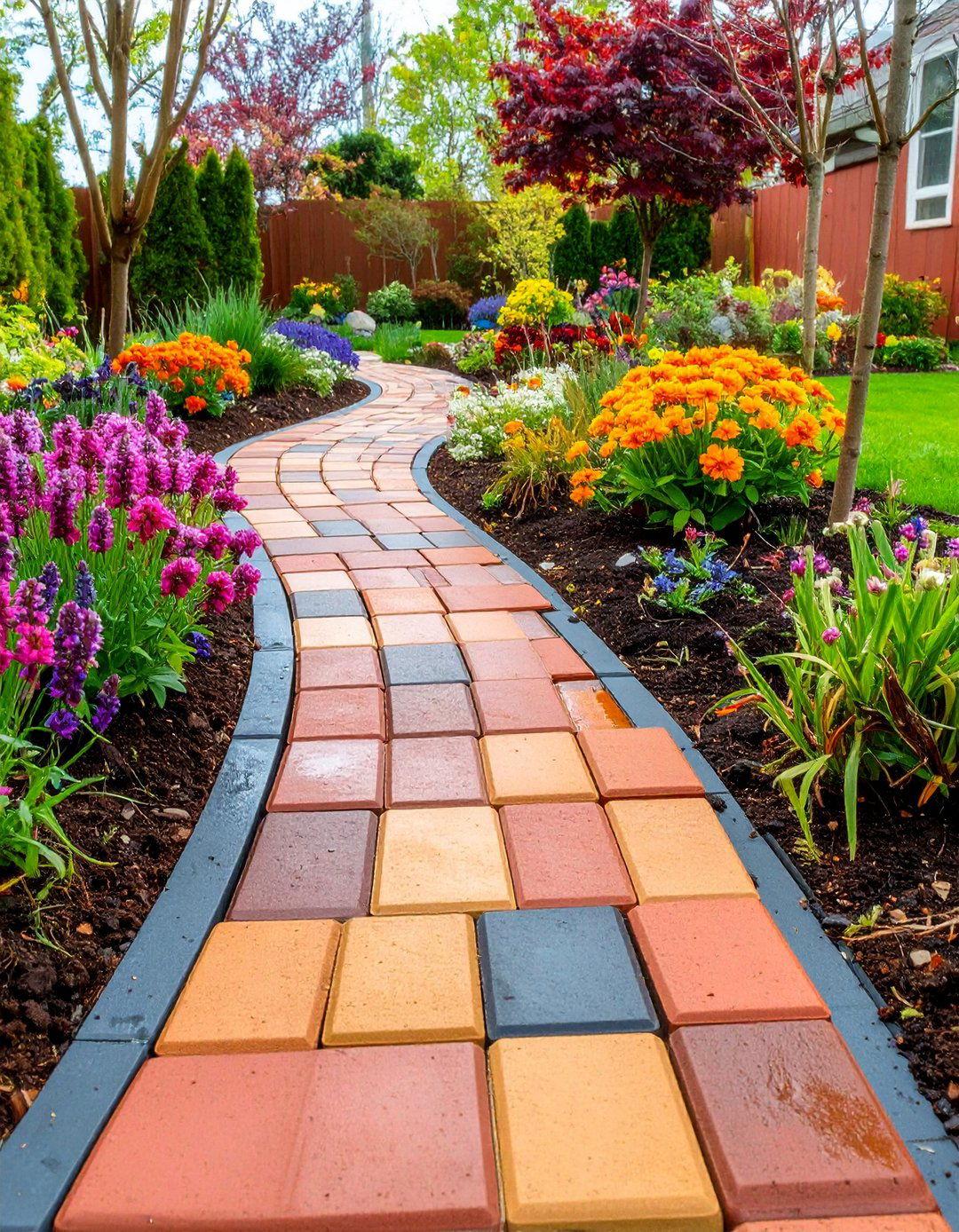

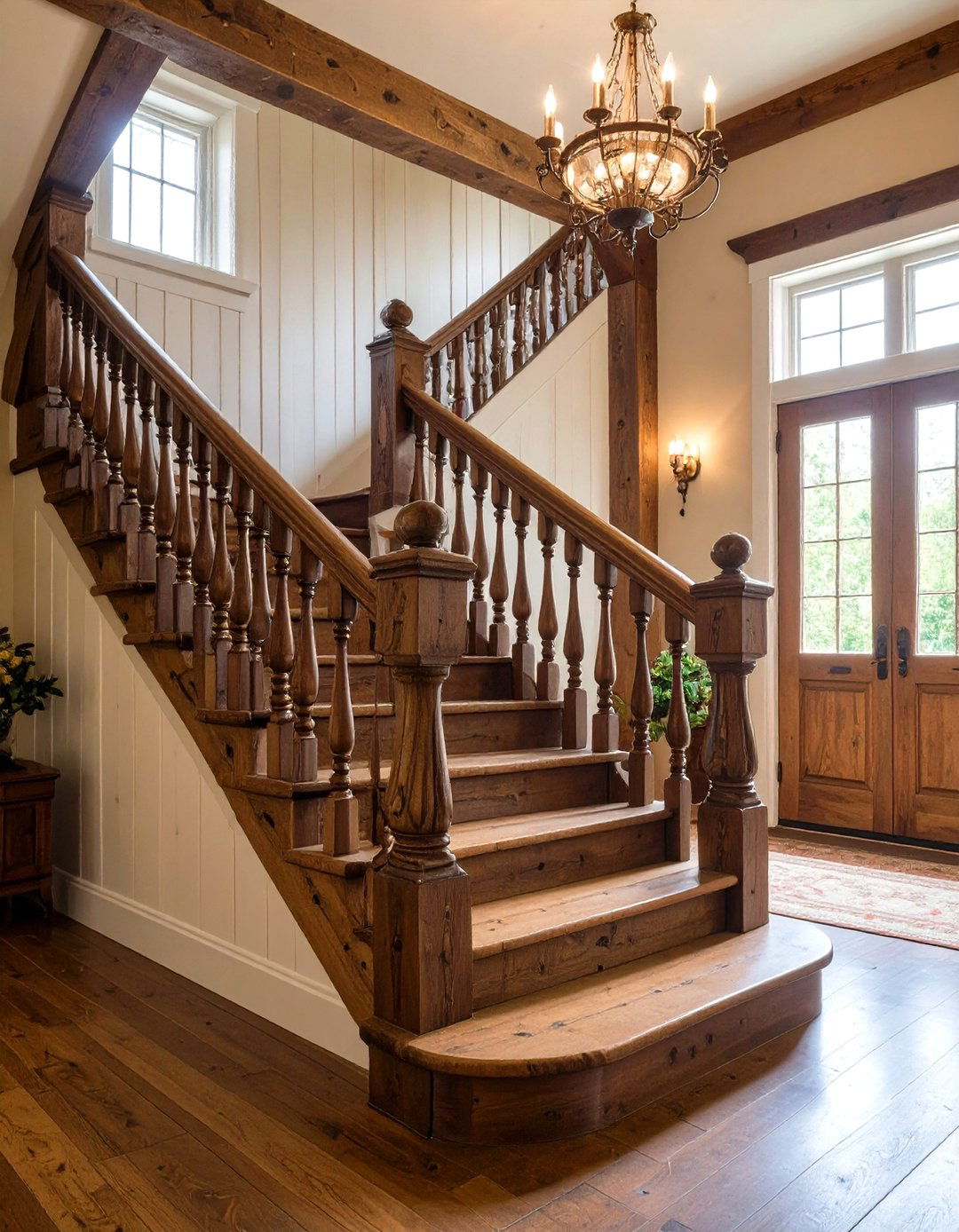
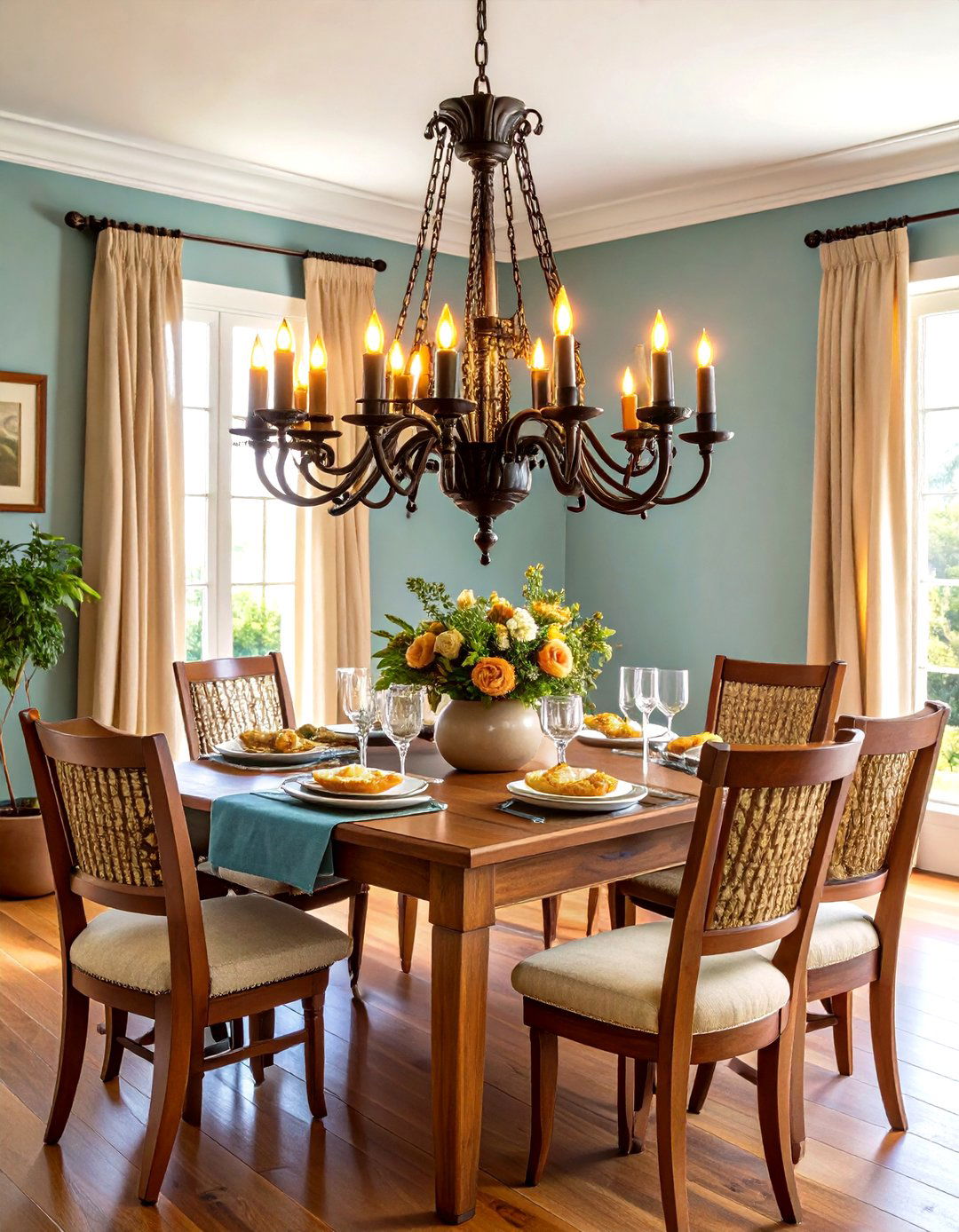
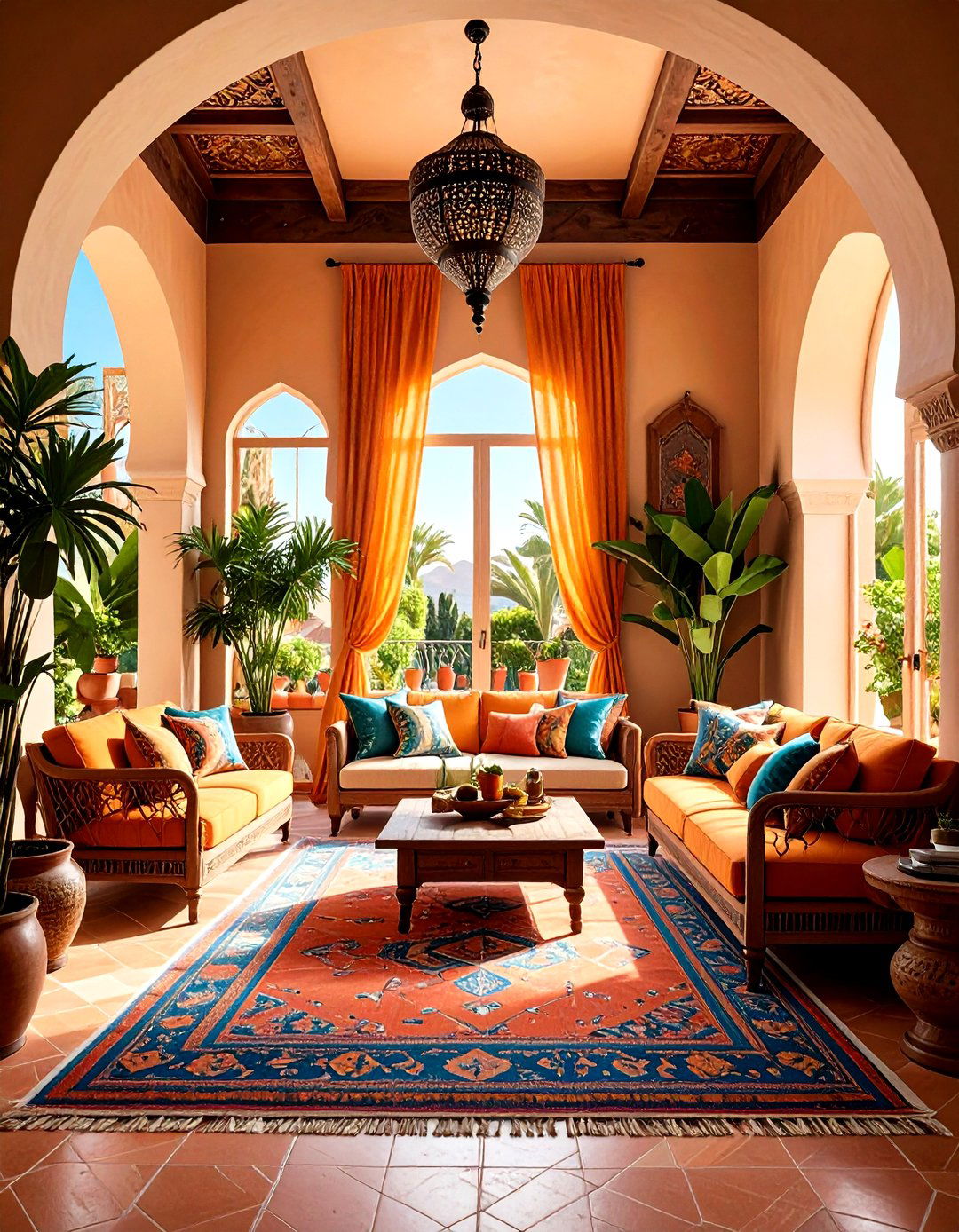
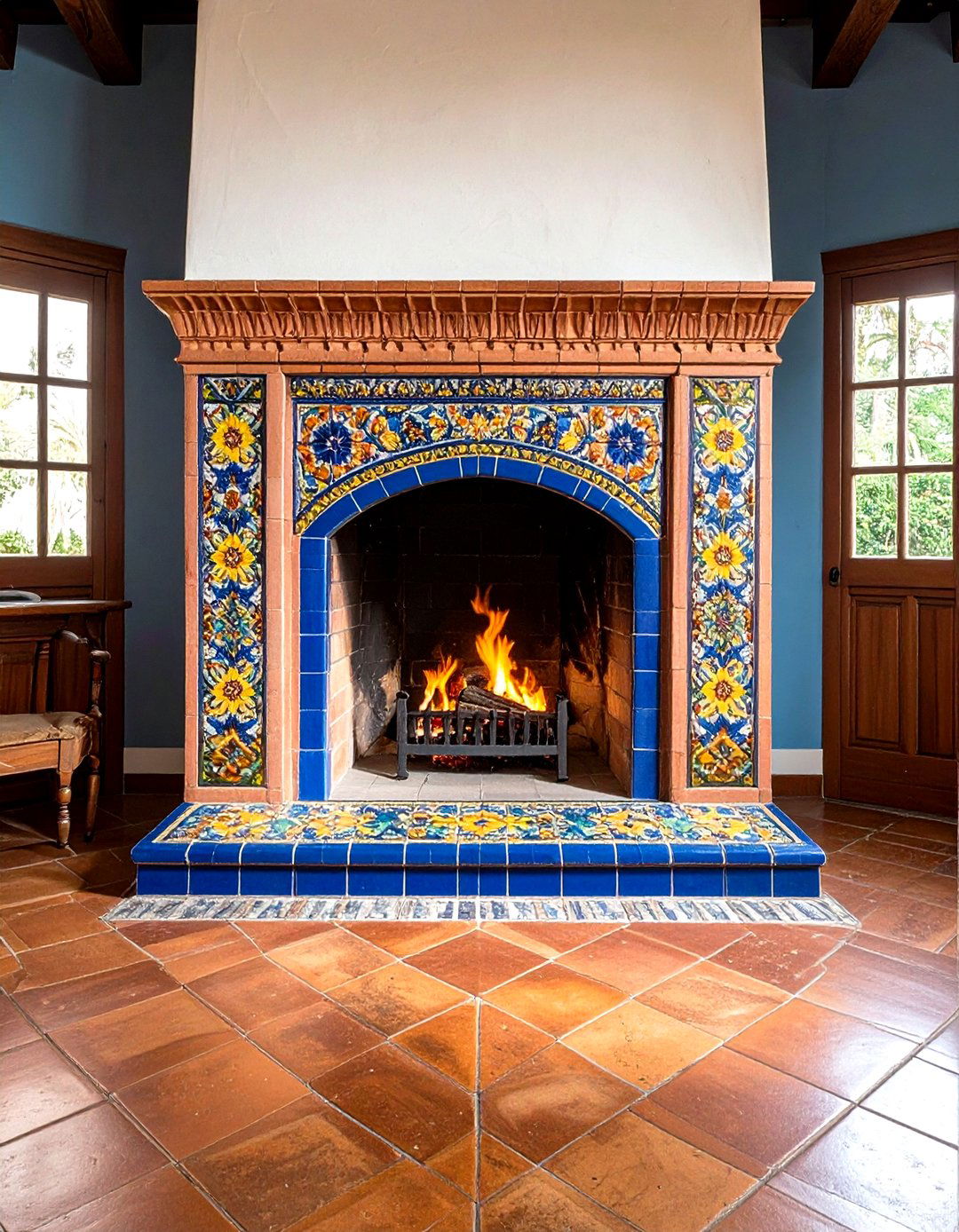
Leave a Reply